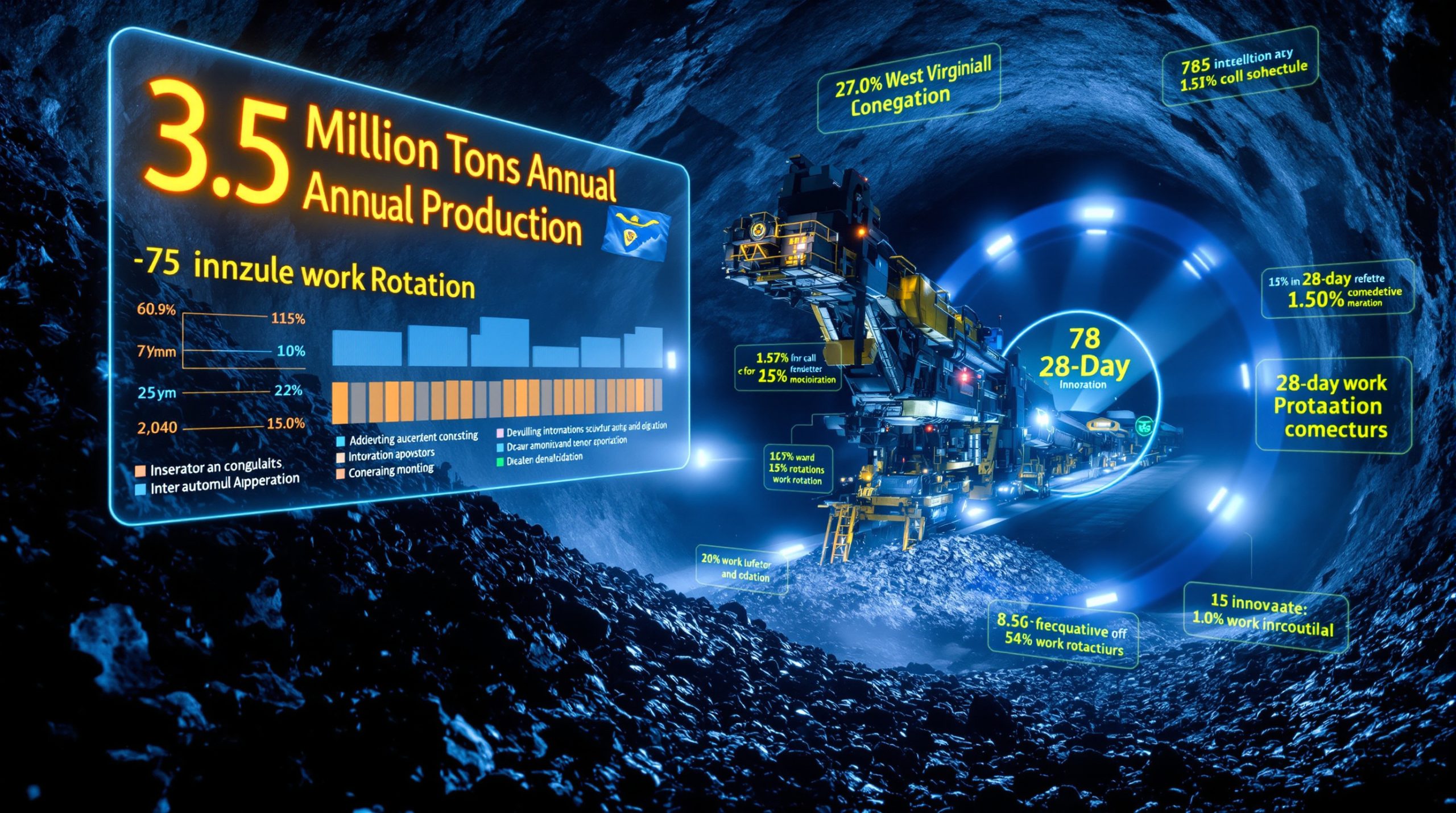How Does Bradken's Circular Economy Partnership Transform Mining Sustainability?
Bradken's innovative approach to mill liner recycling is establishing new benchmarks for sustainability in mining operations while delivering tangible business benefits. This collaborative circular economy model demonstrates how sustainable mining transformation can be successfully implemented in heavy industry, even in sectors traditionally associated with high environmental impacts.
The partnership represents a significant shift from the traditional linear "take-make-dispose" model toward a regenerative approach that keeps materials in use. By implementing a closed-loop system for mill liners, Bradken has created a practical solution to a significant waste challenge in mining operations.
According to data from Australian Mining, the initiative has already cleared over 2,000 tonnes of unused mill liners, demonstrating the program's immediate impact on waste reduction. This achievement aligns perfectly with broader industry efforts to minimize environmental footprints while maintaining operational efficiency.
What Is Bradken's Circular Economy Initiative?
The Scrap Metal Buyback Program
At the core of Bradken's sustainability strategy is a comprehensive mill liner solution featuring an innovative scrap metal buyback program. This initiative allows mining operations to return used mill liners to Bradken, creating a closed-loop system that reduces waste and captures value from materials previously considered disposable.
The program transforms what was once viewed as waste into a valuable resource, reflecting the fundamental principles of circular economy thinking. By designing out waste and pollution, keeping products and materials in use, and regenerating natural systems, Bradken is demonstrating leadership in industrial sustainability.
Recent Sustainability Achievement
In a landmark collaboration highlighted by Australian Mining (2025), Bradken worked with a mining customer to clear over 2,000 tonnes of unused mill liners. This initiative provided the customer with scrap buyback credits while advancing both organizations' alignment with UN Sustainable Development Goal #12 (Responsible Consumption and Production).
This achievement represents more than just waste reduction—it demonstrates how sustainability initiatives can create financial value while addressing environmental challenges. The scale of this single project illustrates the significant potential for waste reduction across the mining sector.
New Credit Agreement Structure
The partnership featured a restructured scrap buyback credit agreement that:
- Established consistent and fair market pricing
- Helped the customer manage mill liner waste more efficiently
- Created a transition pathway toward a more sustainable liner lifecycle
- Aligned with both companies' environmental objectives
This credit structure represents a sophisticated approach to value-sharing that incentivizes sustainable behavior. By making the financial benefits clear and consistent, Bradken has created a compelling business case for participation in the circular program.
What Environmental Benefits Does This Partnership Deliver?
Emissions Reduction Through Steel Recycling
According to Steel Manufacturers Association research cited by Australian Mining (2025), each tonne of recycled steel saves approximately 74% of emissions compared to production from virgin materials. By returning steel from used liners to foundries for recycling, Bradken's program significantly reduces the carbon footprint of mining operations.
This emissions reduction represents a substantial contribution to decarbonization efforts in an industry that has traditionally struggled with high carbon intensity. The program helps mining operations address both their direct and indirect emissions, supporting broader climate commitments.
Renewable Energy Integration
Bradken's manufacturing processes now utilize up to 75% renewable energy sources, demonstrating the company's commitment to reducing environmental impact throughout its operations. This transition from fossil fuels to renewable energy complements the material circularity efforts and creates a more comprehensive sustainability approach.
The combination of material recycling and renewable energy integration demonstrates how multiple sustainability strategies can be effectively combined for maximum impact. This holistic approach addresses emissions at multiple points in the product lifecycle.
Material Circularity Achievements
The company has achieved remarkable circularity metrics:
- Up to 98% of materials used in liner production come from recycled scrap and returned products
- Foundry operations are transitioning away from gas usage
- Process emissions have been measurably reduced across operations
These achievements place Bradken at the forefront of industrial circularity, with recycled content levels that exceed most industry benchmarks. The near-complete circularity of materials represents a significant milestone in sustainable manufacturing.
How Does Bradken's Mill Liner Technology Support Sustainability?
Composite Liner Innovation
Bradken specializes in developing composite liners that incorporate various materials including:
- Rubber components for impact absorption
- Specialized alloys for wear resistance
- Cast inserts for structural integrity
These innovative designs provide advantages across different wear mechanisms:
- Enhanced resistance to corrosion in challenging environments
- Improved performance against abrasion from grinding materials
- Better impact protection in high-energy operations
- Optimized mill volume and throughput for greater efficiency
The composite approach allows Bradken to tailor solutions to specific operational conditions, extending service life while reducing material requirements. This customization supports sustainability by ensuring optimal performance with minimal material use.
Case Study: Australian Mining Operation
For an Australian-based customer, Bradken's mill solutions team recommended composite liners that delivered multiple benefits:
- Increased service life of discharge end liners
- Reduced quantity of liners required for ongoing operations
- Enabled increased throughput for improved productivity
- Addressed high-impact conditions with lighter, more efficient components
This real-world application demonstrates how technological innovation and sustainability can work together to deliver operational improvements. The extended service life directly translates to fewer replacements, less waste, and lower lifetime emissions.
What Makes Bradken an Industry Leader in Sustainable Mining Solutions?
Technical Expertise and Innovation
With over 100 years of experience in designing and manufacturing mining solutions, Bradken has developed specialized expertise in:
- Advanced mill liner technology that maximizes operational efficiency
- Wear parts that improve operational longevity in harsh conditions
- Solutions that enhance productivity and throughput for customers
- Innovations that boost efficiency and safety in mining processes
This century of experience provides Bradken with unique insights into material performance and operational requirements in mining environments. The company's longevity in the industry reflects its ability to continually adapt and innovate.
Global Support Infrastructure
Bradken's solutions are backed by:
- A worldwide team of engineering specialists with deep industry knowledge
- Advanced data analysis capabilities for performance optimization
- Sophisticated simulation technologies that predict wear patterns
- Expert recommendations for optimizing mill processing operations
This comprehensive support infrastructure ensures that sustainability improvements don't come at the expense of operational performance. The data-driven approach allows for continuous improvement in both environmental and operational metrics.
Carbon Neutrality Commitment
Bradken has established a clear pathway to become carbon-neutral by 2030 for Scope 1 and 2 emissions through:
- Process efficiency improvements across manufacturing operations
- Mines electrification trends that reduce fossil fuel dependence
- Procurement of renewable energy for production facilities
- Reduction in gas usage across global foundries
This ambitious timeline places Bradken ahead of many peers in the mining supply sector. The commitment to carbon neutrality represents a significant investment in future-proofing operations against climate regulations and market expectations.
How Does This Partnership Benefit Mining Operations?
Operational Efficiency Improvements
The circular economy partnership delivers tangible operational benefits:
- Streamlined waste management processes reduce administrative burden
- Reduced storage requirements for used components free up valuable space
- Financial returns through the buyback program improve cost structures
- Alignment with corporate sustainability goals supports ESG reporting
These operational improvements demonstrate how sustainability initiatives can deliver immediate practical benefits beyond environmental impact. The program addresses common pain points in mining operations while advancing sustainability goals.
Enhanced Product Performance
Bradken's approach ensures environmental goals are achieved without compromising product performance:
- Advanced mill liner systems maintain or improve operational metrics
- Wear performance remains a priority alongside sustainability
- Safety standards are maintained or enhanced through design innovations
- Efficiency gains complement environmental benefits for a comprehensive solution
This balance between performance and sustainability is crucial for adoption in an industry where operational reliability is paramount. By ensuring that environmental improvements don't compromise performance, Bradken has created a compelling value proposition.
Strategic Sustainability Alignment
For mining companies facing increasing pressure to improve environmental performance, the partnership offers:
- Documented progress toward sustainability targets for stakeholder reporting
- Transparent and traceable circular material flows for supply chain accounting
- Support for Scope 3 emission reduction goals through supplier engagement
- Evidence of responsible resource management for regulatory compliance
These strategic benefits address the growing importance of sustainability in corporate governance and investor relations. The partnership provides mining operations with tangible evidence of environmental progress that can be communicated to stakeholders.
What's Next for Circular Economy in Mining?
Expanding the Circular Model
Bradken's future circular economy strategy focuses on:
- Closing the loop on mill liner circularity in a transparent manner
- Ensuring complete traceability throughout the product lifecycle
- Expanding buyback programs to additional product lines beyond mill liners
- Developing new value streams from materials previously considered waste
This forward-looking approach demonstrates Bradken's commitment to continuous improvement in sustainability performance. The expansion to additional product lines represents significant potential for further waste reduction across mining operations.
Industry Transformation Potential
The success of Bradken's approach demonstrates how mining operations can:
- Transform waste management into value creation through innovative partnerships
- Integrate sustainability into core operational processes rather than as add-ons
- Achieve environmental goals while maintaining productivity standards
- Create collaborative partnerships that benefit multiple stakeholders
This transformative potential extends beyond Bradken's specific program to influence broader industry practices. As successful models demonstrate business value, adoption of circular approaches is likely to accelerate across the sector.
Measurable Impact Opportunities
As this circular economy model expands, potential benefits include:
- Reduced industry-wide carbon emissions through scaled recycling
- Decreased demand for virgin materials, preserving natural resources
- Lower waste volumes sent to landfill, reducing environmental liabilities
- Improved resource efficiency across mining operations globally
These quantifiable impacts represent the long-term potential of circular economy adoption in mining. The cumulative effect of widespread implementation could significantly reduce the environmental footprint of the global mining industry.
FAQs About Bradken's Circular Economy Initiative
How does the scrap buyback program work?
The program allows customers to return used mill liners to Bradken for recycling, receiving credit based on fair market pricing while ensuring the materials are properly processed and reused in manufacturing new products. The logistics are managed efficiently through Bradken's global distribution network, minimizing transportation impacts while maximizing material recovery.
What types of mining operations can benefit from this approach?
Any operation using mill liners in AG (autogenous grinding), SAG (semi-autogenous grinding), ball or rod mills can potentially benefit from Bradken's circular economy initiatives. The program is adaptable to different scales of operation, from mid-sized mines to major global producers, with customized implementation based on specific operational requirements.
How does this program help mining companies meet their ESG goals?
The program provides documented evidence of responsible material management, reduces Scope 3 emissions, decreases waste to landfill, and supports broader sustainability reporting requirements. This documentation can be integrated into GRI, SASB, or other standardized sustainability reporting frameworks, providing verified data for stakeholder communications.
What makes Bradken's composite liners more sustainable than traditional options?
The composite liners often require fewer replacements, incorporate recycled materials, can be lighter (reducing transportation emissions), and are designed for eventual recycling through the buyback program. The integrated design approach considers full lifecycle impacts, optimizing material usage while maintaining or improving operational performance.
How can mining operations get started with implementing circular economy principles?
Companies can begin by evaluating their current waste streams, identifying opportunities for material recovery, and partnering with suppliers like Bradken who offer closed-loop solutions for key components. Initial assessments can quantify current waste volumes and potential recovery value, creating a baseline for measuring program success.
Further Exploration:
Readers interested in learning more about circular economy principles in mining can also explore mine reclamation innovation and critical minerals recycling approaches. Additionally, emerging technologies like flash joule heating recycling are revolutionizing how the industry thinks about material recovery in the CircAlloy Training Centre.
Want to Profit from the Next Major Mineral Discovery?
Discover how to identify significant ASX mineral discoveries instantly with Discovery Alert's proprietary Discovery IQ model, which transforms complex geological data into actionable investment insights. Explore why major mineral discoveries can lead to substantial market returns by visiting Discovery Alert's dedicated discoveries page and position yourself ahead of the market.




